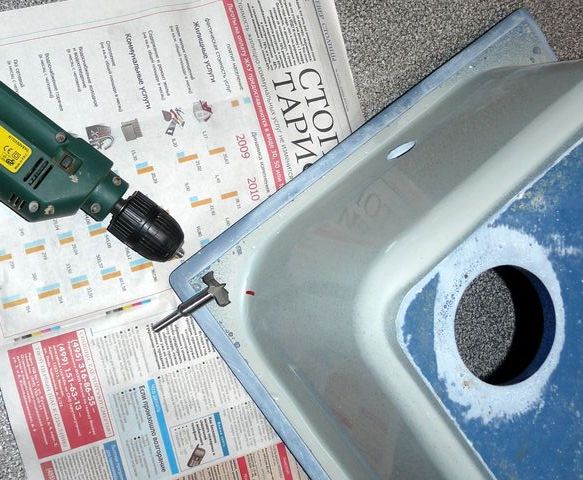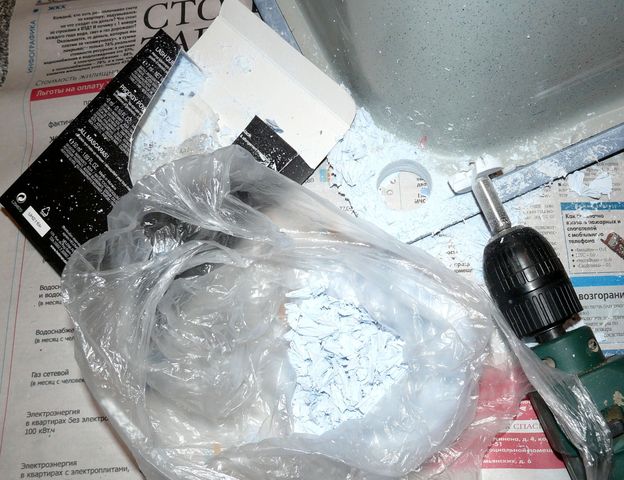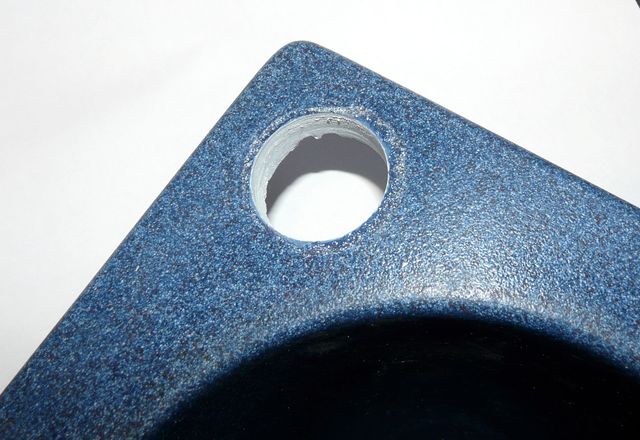Most of synthetic marble sinks do not have openings for faucet and knobs installment. Some of them have half-cut holes, which you have to punch with a hammer to get them open.
But if they don’t, how to drill cultured marble?
With a drill, of course. Manufacturers claim that synthetic marble bear the features of natural stone is a bit of a stretch. Even in they do, hardness is not one of those features. cultured marble is in essence, a plastic: resins are mixed with crushed stone to create synthetic marble. The ratio range from 20 percent stone dust and 80 percent fiberglass up to 80 percent stone and 20 percent polymer. Anyway, such material is much easier to drill than natural stone.
Some cut the holes after installation from the face side. This has only one advantage: the cut will be smooth from the outer side. However, there’s a high risk of scratching the surface by jumping drill and even snapping a piece if you’re drilling to close to the edge.
When drilling from the back side of the sink, the edges of the outside hole will most probably have tiny cracks. But there’s zero chance of damaging the surface or breaking an edge.
So we’ll be drilling a hole from the back side of the sink. To do that, you need a power drill and a milling cutter. The standard hole for a kitchen faucet is 35mm so get a 35mm mill.
Place the sink face down of a flat wooden board covered with scrap paper. It is strongly advised to mark the corner where the faucet should be, as it is really easy to mix things up when something is upside down.

Now, mark the center of the future hole. The most easy way to do that is to use the lower faucet mount as a matte and mark the center of it. Be careful to place the center as far away from the edge as possible, yet not touching the sink cup.

Put the miller into the drill, and making sure hammer mode is turned off, start to drill on medium RPM. Make sure the miller doesn’t jerk around.

This drilling produces a lot of lights plastic sawdust, bursting to the sides, so put a paper cut-out paper box to collect it. The drill also heats the resin, so it produces light odour, similar to that of scale model cement.

When wooden sawdust starts to appear, that means you’ve reached the board we put under the sink, and cultured marble hole is ready.

The cracked edge is not more that 1-2mm in diameter, and the faucet base will cover it and hide from the eye. If you still need to get a perfect drill from the upper side of the marble sink, first drill a small center hole from the under side with any wooden drill. The miller will use it as a guide when drilling from the upper side.